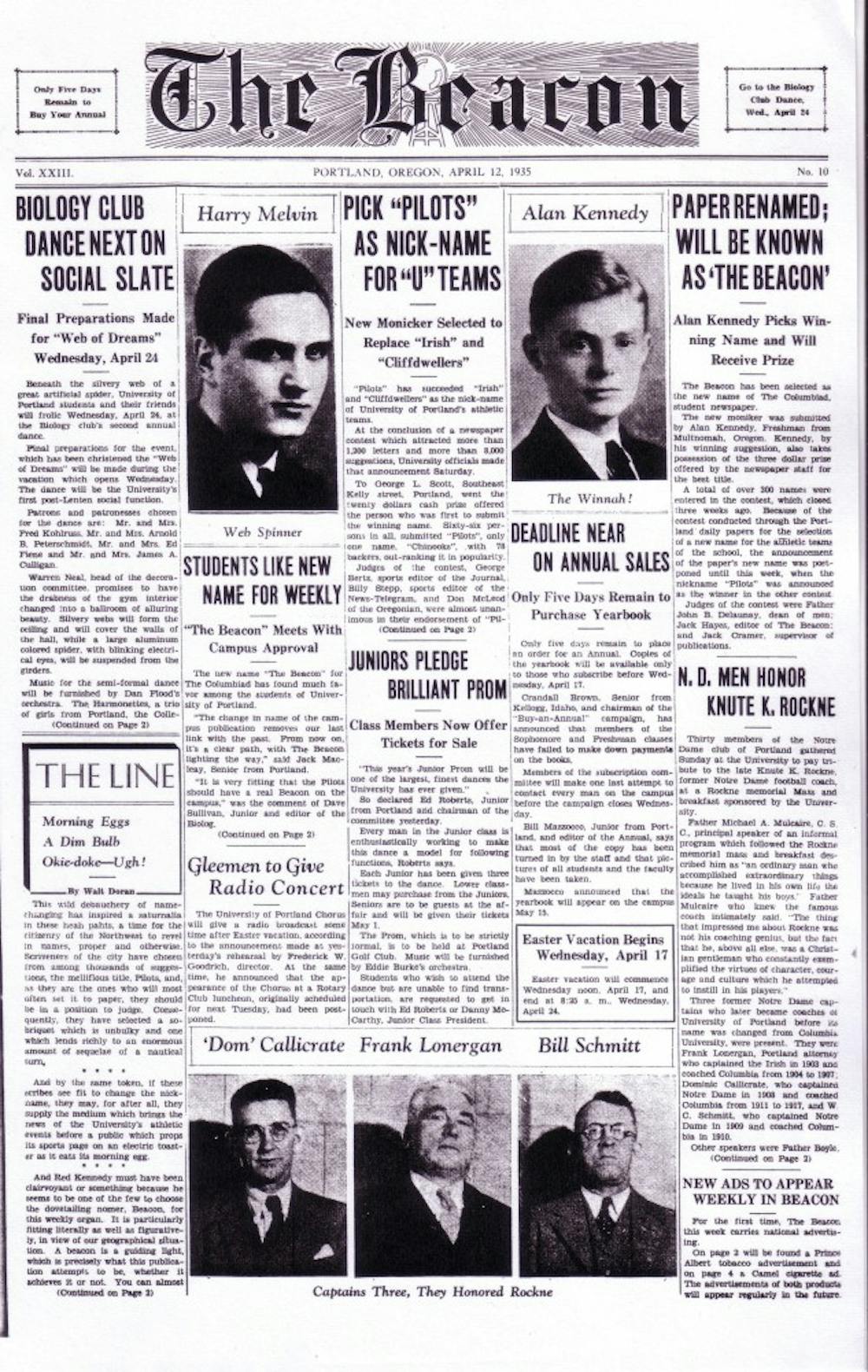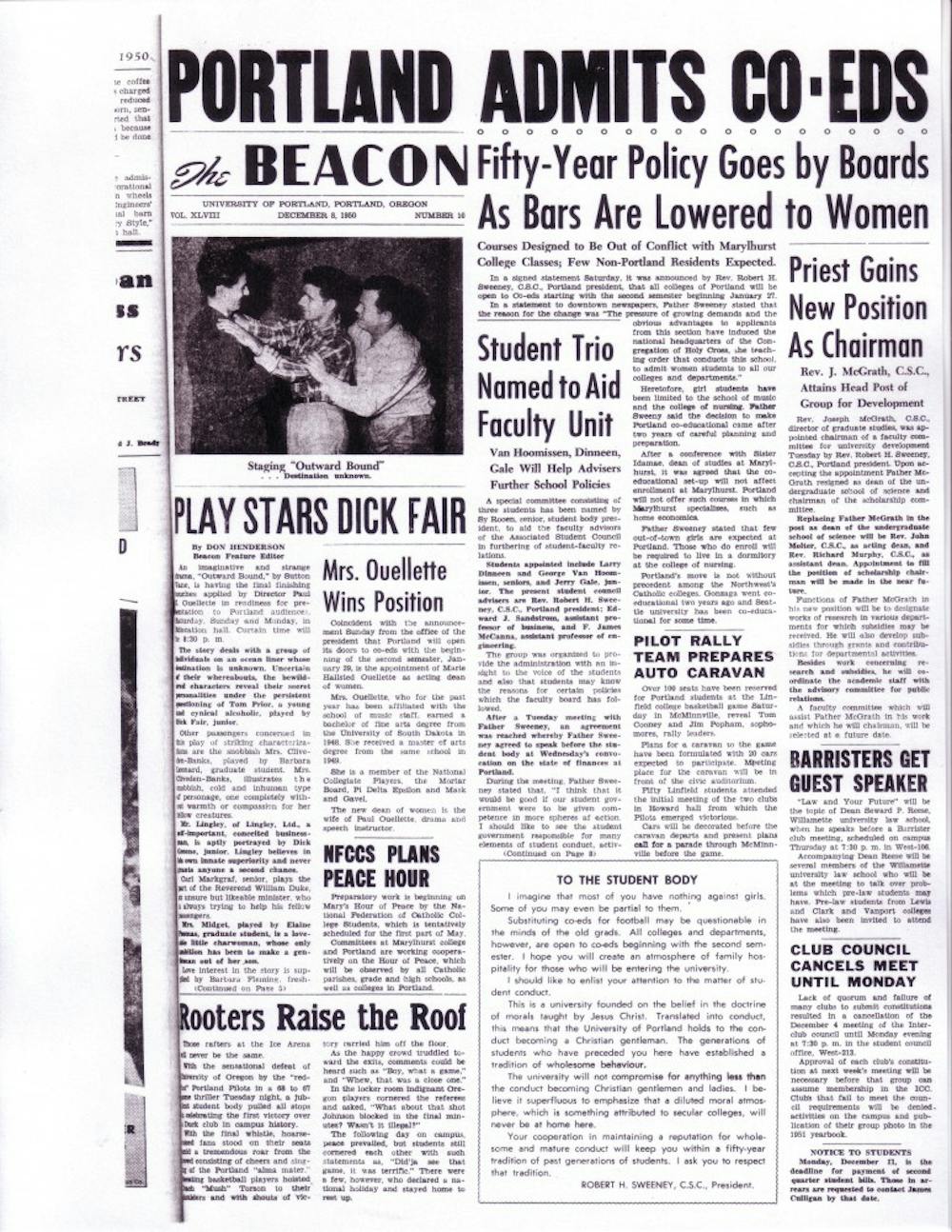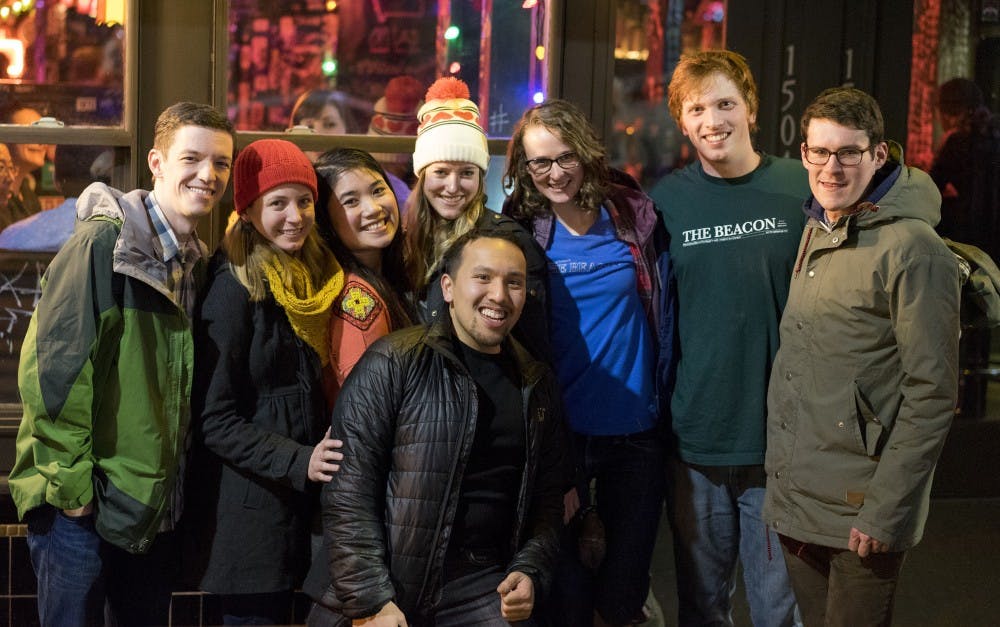By Maggie Hannon
It’s hard to imagine the University outside of the nautical theme. In 1935, what was once Columbia University, named after the Columbia River, became the University of Portland. Along with the new school name, came a new weekly school paper.
Student Alan Kennedy won $3 for his idea of the paper’s name, and on April 12, 1935, the first issue of The Beacon was published.
“The change of the name to the student publication removes our last link from the past. From now on it’s a clear path with The Beacon lighting the way,” Jack Macleay, a senior at the time, said in The Beacon’s first issue.

The first issue of The Beacon, April 1935
The Beacon, which was originally housed in Howard Hall, has seen many changes over its 80 years and it tracked the changes that took place within the University.
Up until the 1950s, The Beacon had advertisements for cigarettes that featured movie stars like Rita Hayworth, Betty Grable and John Wayne.

It was not until 1986 that The Beacon had its first color page.
Several issues have been repeatedly addressed in The Beacon throughout the years. As early as 1970, The Beacon wrote about students wanting a pub on campus and since the 1950s students wanted a new Howard Hall.
Fr. Bob Antonelli, former archivist for the University, has seen these issues addressed in The Beacon, but has also seen a change in what is addressed in the paper.
“The Beacon really changed from a detailed photograph of what daily life was like on campus to as it is now, focused on issues,” Antonelli said. “One thing that has been constant from probably the 1950s was the need for a new Howard Hall. So here we are finally.”
Several changes to the University are seen through the pages of The Beacon. Stories about new residence halls and dining halls graced its pages for years. One of the most notable changes to the University was when women were admitted in 1951.
Fr. Robert H. Sweeney, president at the time, addressed this significant change on the front page of The Beacon.
“The University will not compromise for anything less than the conduct becoming Christian gentleman and ladies,” Sweeney said. “I believe it superfluous to emphasize that a diluted moral atmosphere, which is something attributed to secular colleges, will never be at home here.”
While the paper originally published mainly campus events, it grew to write more about issues that affect the larger community.
“(The University) started reaching out and that was reflected in the type of articles that would go in The Beacon,” Antonelli said. “It showed that the University itself was more and more conscious of being a place of sort of service to the community, and not just to the students.”

In its history, The Beacon has published articles about World War II, Martin Luther King Jr.’s assassination, protests of the Vietnam War and a visit from Senator Robert Kennedy in 1968.
In more recent years, The Beacon has moved its pages online. The first website came in 2007, but a new website was built in the summer of 2014. The paper debuted its first mobile app last fall. The Beacon is also active on Facebook, Twitter and Instagram.
The Beacon has received many journalism awards in recent years, including awards from the Society for Professional Journalists, Associated Collegiate Press, the Columbia Scholastic Press Association, the College Media Association and the Oregon Newspaper Publishers Association.
Although The Beacon has seen a lot of changes in its 80 years in circulation, some things have remained the same. One constant was the reminder to students about the effects of alcohol. The Beacon has also advised students about ways to deal with stress and resources at the Health Center.
According to Antonelli, another aspect of the paper that has not changed is the emphasis on student and faculty achievement.
“The Beacon always paid adequate attention to the good of what students were doing,” Antonelli said. “They gave affirmation, confirmation, and support to individual students or teams who were showing excellence and from that point of view, they were showing what is possible to everyone else."
To hear stories from alumni who worked at The Beacon in the "old days," click here.








